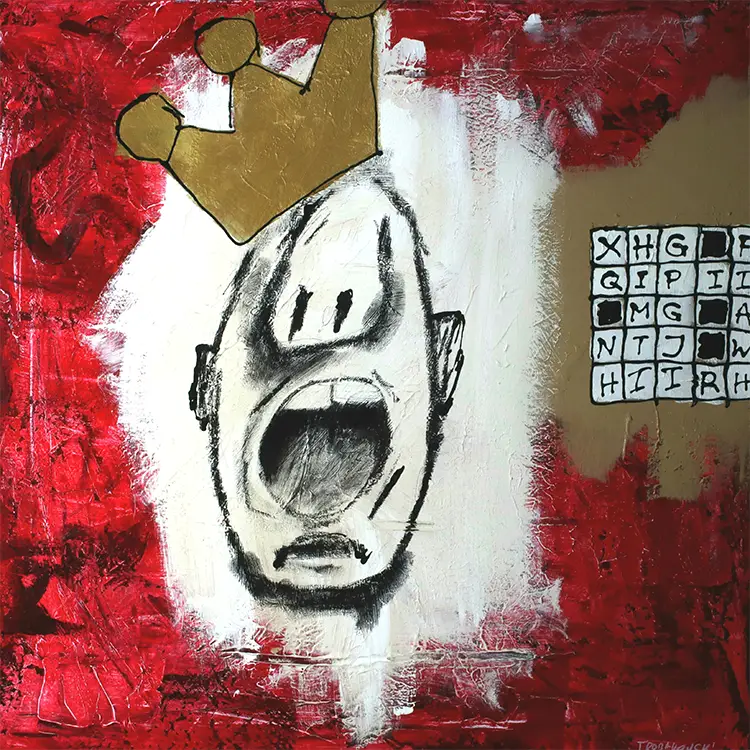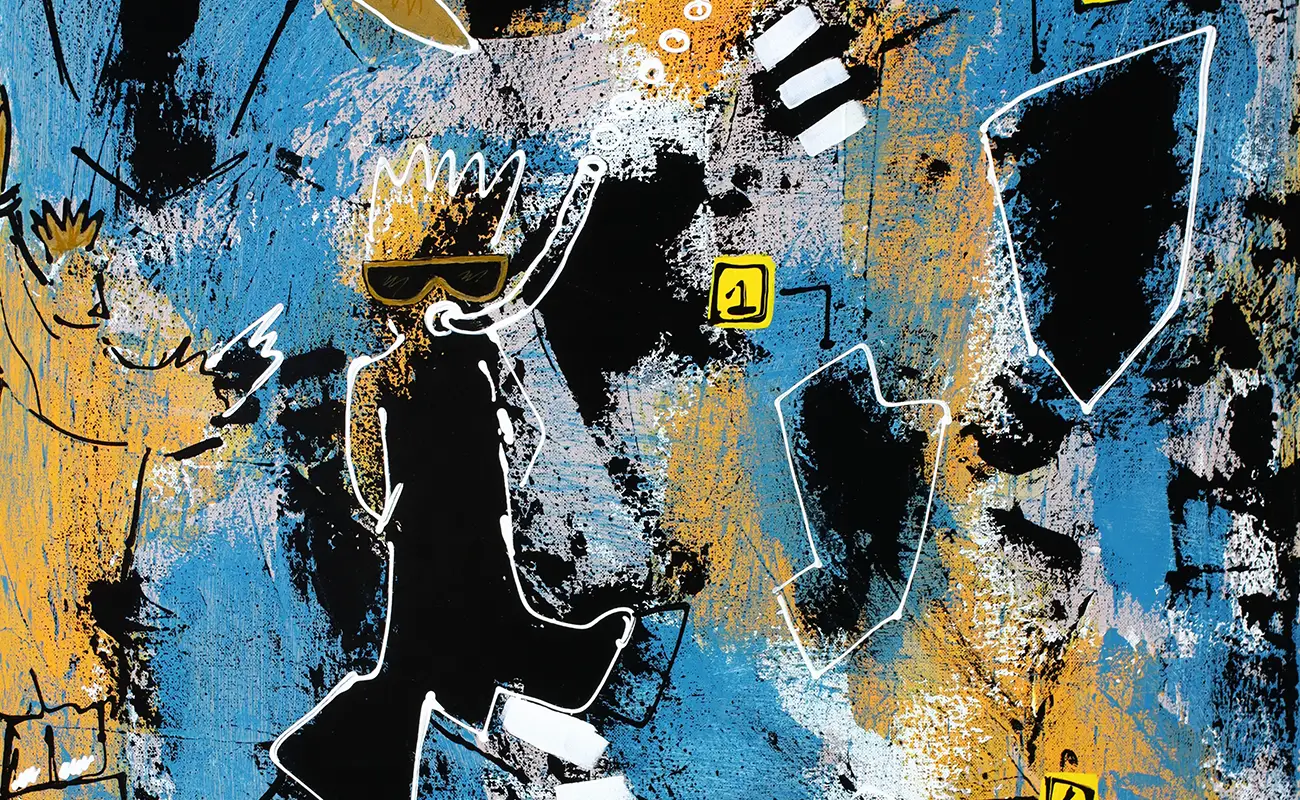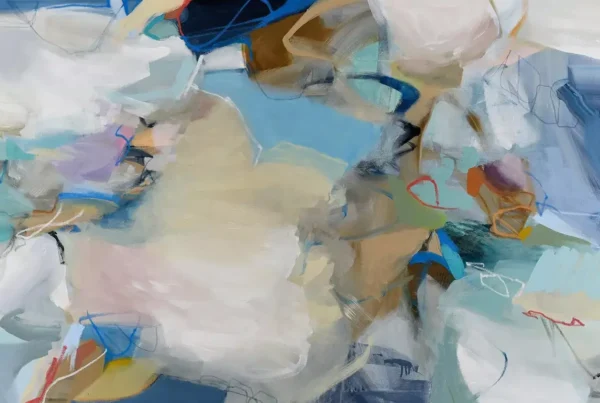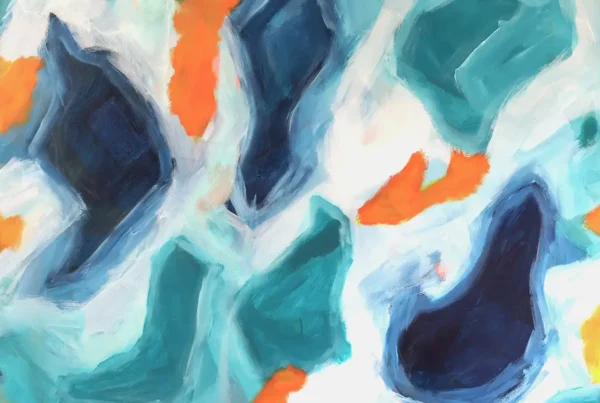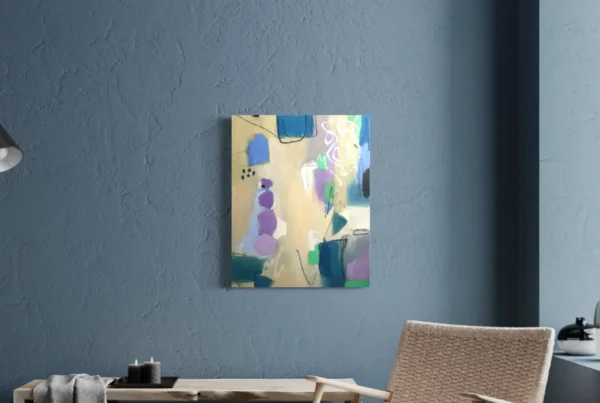“You don’t really become an artist — you simply are one.”
Between Canvas and Code: A Dual Creative Identity
Tomasz Robakowski operates at an intriguing intersection between structured logic and unrestrained expression. While his professional background lies in software engineering, his artistic output speaks a visual language guided by intuition, spontaneity, and emotional rawness. This uncommon pairing—technology and art—creates a tension and dynamism that uniquely define his work. Throughout his creative evolution, Robakowski has engaged in a wide array of media, from caricature and comic-inspired sketches to digital explorations and traditional charcoal studies. Yet it is in acrylic painting where he has carved out his strongest presence, crafting bold compositions that lean toward expressionism and modern visual language.
His academic training in UX design and painting, undertaken at the Academy of Fine Arts in Łódź, adds yet another layer to his perspective. This education strengthens his ability to unite precision with imagination, analytical structure with artistic flow. Rather than separating these identities, Robakowski allows each to enrich the other. The logical mindset honed in engineering informs the way he frames problems and compositions, while his painter’s instinct resists linearity and seeks disruption. This synthesis becomes evident in the layered quality of his work, where chaos and control co-exist within every brushstroke.
The thematic content of Robakowski’s art is just as hybrid. His inspiration emerges not from grandiose narratives or stylized symbolism, but from the rhythm of ordinary life and the emotional residue it leaves behind. The things he paints often begin as flickers—glimpses caught in liminal moments, like a vision before sleep or a subtle detail in nature. These impressions mutate into visual statements that are deeply personal yet resonant, providing space for the viewer to engage in open interpretation.
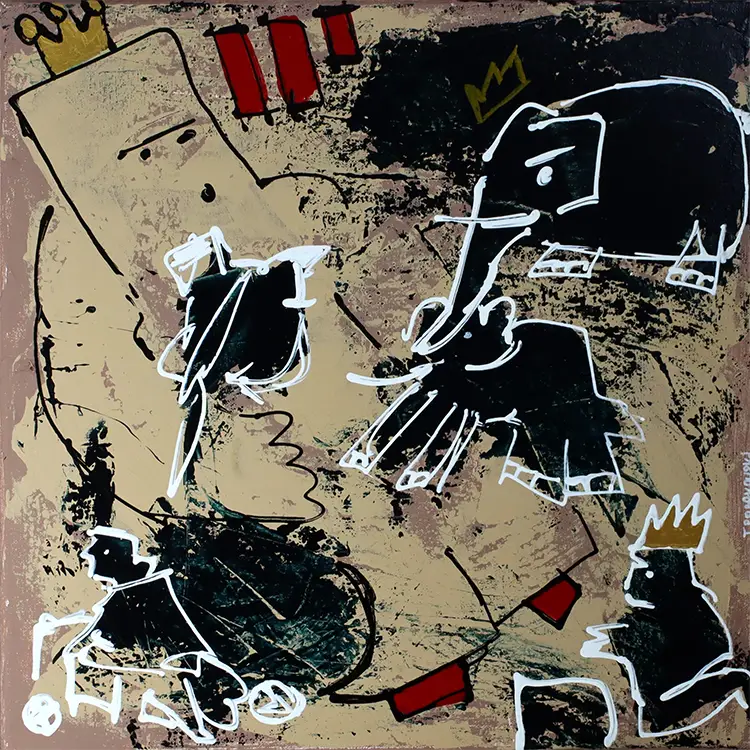
Tomasz Robakowski: Painting the Unplanned
Robakowski’s journey into the arts was never mapped in advance. Raised in a family that prioritized pragmatism and security, he was encouraged to pursue a stable career rather than one in the creative field. This led him to engineering—a world governed by systems and solutions. However, the creative impulse within him proved impossible to suppress. It gradually found its way through various forms: photography in the darkroom, playful comic illustrations, and experimental sketches. The pivotal shift occurred when he picked up a paintbrush, unleashing a flood of artistic energy that had been simmering beneath the surface for years.
His current artistic style is largely intuitive, unburdened by predefined outcomes or thematic rigidity. He often begins with a vague concept or image, allowing the painting to evolve organically as he works. This spontaneity is not a lack of discipline but a deliberate openness to possibility. Robakowski doesn’t control every step; instead, he lets the painting reveal itself, frequently arriving at conclusions that surprise even him. This method reflects both his confidence in visual storytelling and his respect for the unconscious forces that guide creative decisions.
What defines Robakowski’s practice today is this harmony between instinct and experimentation. Whether it’s the pattern left by a wet cloth tossed at the canvas or a random blotch of color resembling a melting snow patch, his source material defies categorization. There is no fixed message or forced interpretation, only an ongoing dialogue between material, moment, and meaning. His paintings do not dictate; they suggest, leaving space for ambiguity, reflection, and reinterpretation.
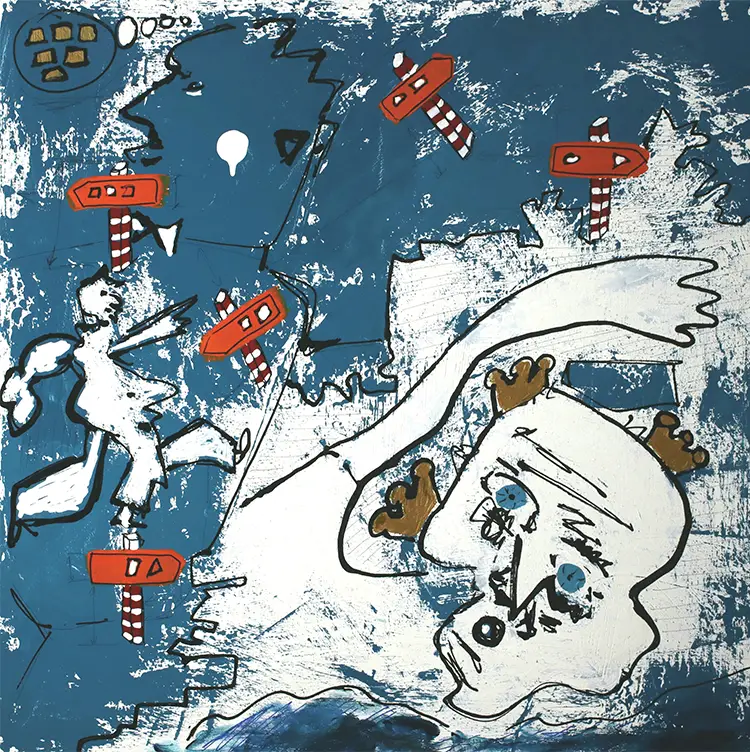
Unfinished Stories and Everyday Energies
A number of significant influences can be traced throughout Robakowski’s practice, though they are rarely overt. He acknowledges the imprints of artists such as Keith Haring, Paul Richard, Jean-Michel Basquiat, and Jean Dubuffet in his work. These figures resonate with him not only stylistically, but also through their approaches to spontaneity, social commentary, and the use of urban and abstract visual vocabularies. Yet for Robakowski, inspiration is not limited to the art world. The unrelenting pace and mental demands of his professional life frequently compel him to paint, turning artistic practice into a form of release and mental reset.
Rather than centering his work around overt symbolism or linear storytelling, he gravitates toward raw energy and visual suggestion. This approach positions his paintings as incomplete narratives—inviting rather than instructing. Many viewers experience his pieces as springboards for their own interpretations, projecting personal memories or constructing stories from the fragments he provides. Robakowski values these interactions and considers them integral to the artwork’s meaning. The viewer’s contribution completes the piece in a way no artist alone can.
This openness to interpretation reinforces his belief in art as a participatory experience. His works resist static meaning and instead pulse with potential, continuously redefined by those who encounter them. Whether chaotic or composed, jagged or fluid, his paintings function as emotional surfaces where viewers may find parts of themselves reflected back. It is this capacity for multiplicity and shared authorship that positions Robakowski’s art not only as a personal endeavor but as a communal experience.
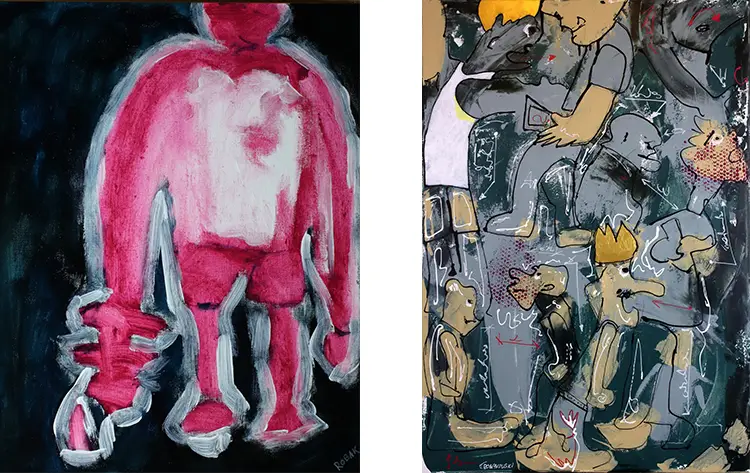
Tomasz Robakowski: Subconscious Visions and Symbolic Forms
Among the many works Robakowski has created, one early piece remains particularly poignant. It portrays a haunting scene: a drowsy child holding a kitten, not cradled in affection but suspended by its tail. This unsettling image arrived without warning, just before sleep—a moment when the mind wanders into unfamiliar terrain. He felt a strong compulsion to paint it, not because he fully understood its meaning, but because it demanded expression. Rendered in acrylic on a 40×50 cm panel, the piece is framed in a lavish, gilded baroque-style frame, which adds a jarring layer of contradiction to the already disturbing subject.
What makes this work so significant is not just its imagery, but what it represents in the arc of Robakowski’s development. It marked a moment of realization: painting could serve as a direct conduit for the subconscious. Unlike photography or sketching, which often rely on more deliberate techniques, painting opened a channel for unfiltered psychological content to surface. The dramatic juxtaposition of the image and its ornate frame heightens its impact, turning a seemingly simple composition into a complex emotional artifact.
Looking ahead, Robakowski is channeling his energy into a new project titled Aftersects. This series investigates insect forms, but only as residual impressions—afterimages stripped of anatomical complexity, yet retaining essential characteristics. Through this process, he explores chromatic relationships and symbolic depth, transforming biological subjects into abstract visual experiences. The project reflects his continued interest in fragmentation, minimalism, and the interplay of perception and memory. Though still in development, Aftersects promises to expand Robakowski’s practice into new thematic territory while remaining consistent with his emphasis on ambiguity and emotional resonance.
